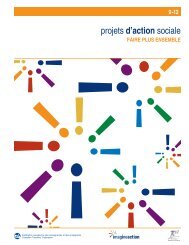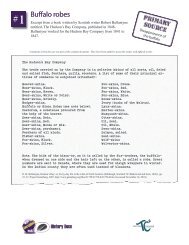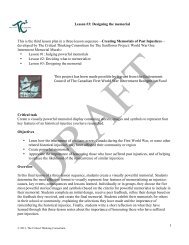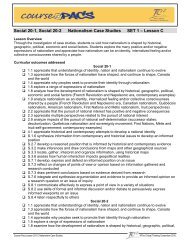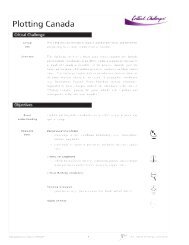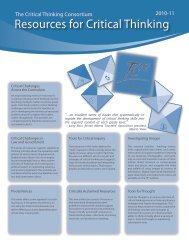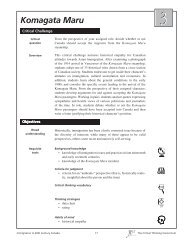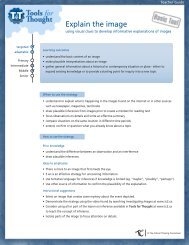Inquiry-mindedness - The Critical Thinking Consortium
Inquiry-mindedness - The Critical Thinking Consortium
Inquiry-mindedness - The Critical Thinking Consortium
Create successful ePaper yourself
Turn your PDF publications into a flip-book with our unique Google optimized e-Paper software.
TEACHER RESOURCE #6Explore poverty further using some or allof the following critical challenges<strong>Critical</strong> challenge #1Create an accurate, sensitive, and revealing representation that illustrates “the face ofpoverty” in the community.➤➤➤➤➤➤➤➤➤➤➤➤➤➤➤➤Discuss whether or not homelessness might exist in your students’ own community. Discuss otherindicators of poverty and whether or not they may be present in the local community. Introducethe question: What does poverty look like in our community? Explain to students that their task isto create an accurate, sensitive, and revealing representation that illustrates “the face of poverty”in the community. Point out that poverty is often hidden in a community and discuss why thismight be the case. Clarify that “face” does not mean identifying specific people who are poor butrather it means making the issue of poverty more public (for example, showing homes that arein disrepair).As an example of one aspect of poverty show students the stories of two young people living inpoverty from the following website. <strong>The</strong> UN Works for People and the Planet website is hostedby actor Tim Robbins and focuses on the plight of homelessness in America. Click on the faces ofthe two young people in the smaller squares in the centre of the page to hear their stories: http://www.un.org/works/sub3.asp?lang=en&id=111.Brainstorm with students possible sources of information about local poverty. Suggestions couldinclude the food bank, anti-poverty groups, Statistics Canada, city hall, church organizations (suchas the Salvation Army), homeless shelters, local police, newspaper, library, school board. Includeother agencies in the community that support those living in poverty.Introduce the Credibility of sources strategy using materials from Teacher Resource #1. Invitestudents to identify the most credible sources for finding information about poverty in their community.Divide students into groups to conduct their research and create their representation. Suggest tostudents that interviewing is one way to collect information. Introduce the Responsive questioningstrategy using materials from Teacher Resource #4. Support students in developing initial interviewquestions and encourage them to use responsive questions during their interview.Discuss with students various ways to organize their research information. Develop an appropriatechart or graphic organizer.Remind students of the criteria for their representation: accurate, sensitive, and revealing. Brainstormvarious forms of representation (examples include posters, songs, collages, videos, computerpresentations).Invite students to share their representations. Encourage students to ask responsive questionsfollowing each presentation.Tools for Thought 2008–09:3 51 © <strong>The</strong> <strong>Critical</strong> <strong>Thinking</strong> <strong>Consortium</strong>



